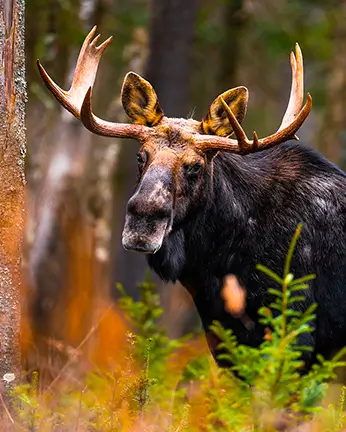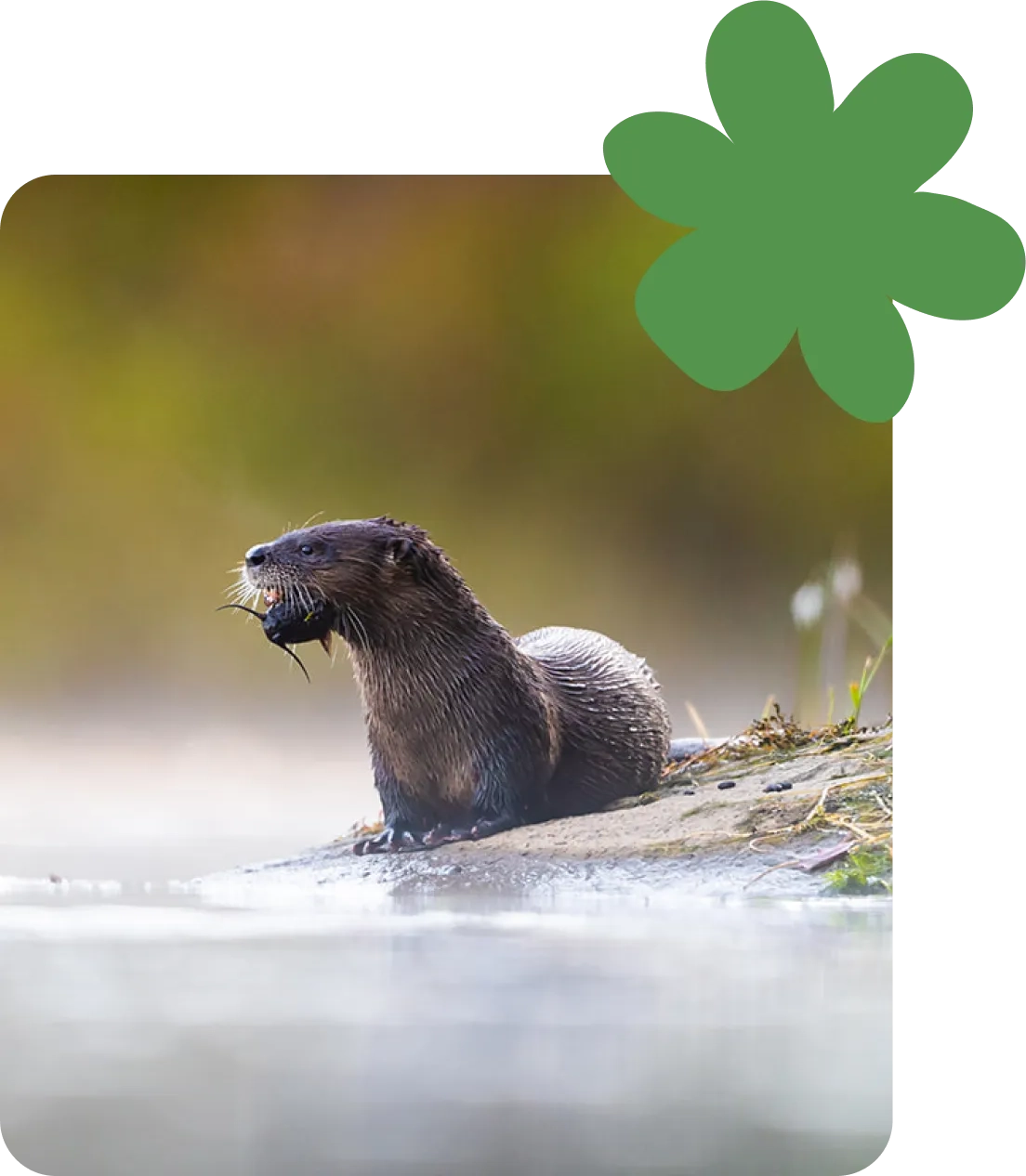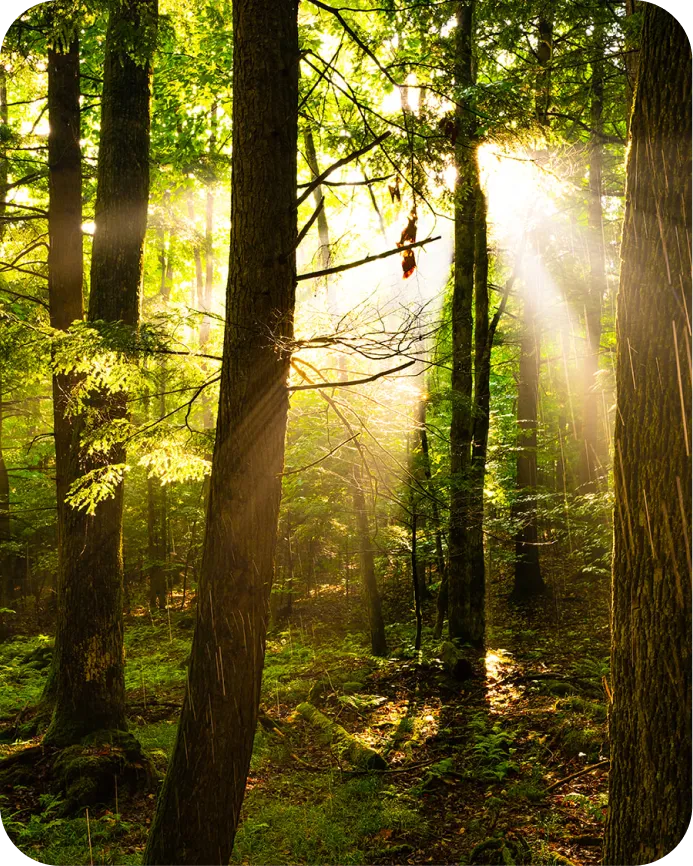Biodiversity in Quebec’s Appalachian region
A distinctive and resource-rich area
The importance of the Northern Green Mountains goes beyond their strategic role in ecological connectivity. Their ecosystems are also rich and diverse.
The region’s representative forests are commonly dominated by sugar maple or red maple, often accompanied by yellow birch, American basswood, white ash, black cherry, American beech, hop-hornbeam, American elm, or eastern hemlock. Within Corridor Appalachien’s area of work, several exceptional forest ecosystems can be found. They are designated as such due to their rarity, the near absence of human or natural disturbances, the presence of very old trees (old-growth forests), or the confirmed shelter they provide for one or more threatened or vulnerable species.


A world-class gem
A Habitat For Threatened Species
The Northern Green Mountains feature rugged terrain, including some of the highest peaks in southern Québec.
Bicknell’s thrush, a threatened species, can be found at the summit of Round Top, the highest peak of the Sutton Mountains range and one of the few places that meets this bird’s very specific habitat requirements. Steep slopes also represent an ecologically sensitive and important element of our region.

A rich flora and fauna to discover
The Northern Green Mountains harbour an impressive biodiversity, with nearly 1,000 plant species and 2,000 animal species recorded to date.
The flora includes several species representative of the Appalachian natural province, such as blue cohosh (Caulophyllum thalictroides), hay-scented fern (Dennstaedtia punctilobula), Canada lily (Lilium canadense), nodding trillium (Trillium flexipes), red trillium (Trillium erectum), green false hellebore (Veratrum viride), and moosewood viburnum (Viburnum lantanoides).
It also comprises 63 species considered at risk, including maidenhair fern (Adiantum pedatum), ostrich fern (Matteuccia struthiopteris), wild leek (Allium tricoccum), Canadian wild ginger (Asarum canadense), twinleaf (Jeffersonia diphylla), and butternut (Juglans cinerea).
The fauna includes 50 fish species, 18 amphibians, 11 reptiles, 302 birds, 47 mammals, and more than 1,500 invertebrates. All bat species found in Québec occur here. However, many of these species are considered at risk. These include 12 insects, 2 molluscs, 5 fish, 4 amphibians, 5 reptiles, 25 birds (19 breeding and 6 migratory species), and 10 mammals. Notable examples are the ring-necked snake (Diadophis punctatus), the pickerel frog (Lithobates palustris), the chimney swift (Chaetura pelagica), and the little brown bat (Myotis lucifugus).
Among all these species, those requiring large habitat areas are especially vulnerable to disturbance. Two key groups fall into this category: interior forest birds — such as the pileated woodpecker (Dryocopus pileatus), Canada warbler (Cardellina canadensis), olive-sided flycatcher (Contopus cooperi), barred owl (Strix varia), scarlet tanager (Piranga olivacea), and winter wren (Troglodytes hiemalis) — and wide-ranging mammals like black bear (Ursus americanus), bobcat (Lynx rufus), and moose (Alces alces). These species require extensive, unfragmented spaces to meet their survival needs.
The Northern Green Mountains also offer outstanding landscapes and help sustain the vital relationship between people and nature.


Ponds, marshes, swamps, peatlands, and other wetlands
Aquatic and wetland ecosystems also hold their own wonders. For example, meandering rivers bordered by alder stands provide suitable habitat for the wood turtle (Glyptemys insculpta). Wetlands — ponds, marshes, swamps, and bogs — deliver numerous ecosystem services, from carbon sequestration to water regulation, while also being rich reservoirs of biodiversity.
The region also contains many lakes, some of which are home to chain pickerel (Esox niger) or grass minnow (Notropis bifrenatus). Open habitats such as fallow fields are equally important, supporting species like the bobolink (Dolichonyx oryzivorus), eastern meadowlark (Sturnella magna), common eastern bumblebee (Bombus impatiens), and monarch (Danaus plexippus).
Caves, cliffs, and rocky outcrops can also be found here, providing habitats for both fauna and flora — including bats, the peregrine falcon (Falco peregrinus), and rare ferns. This rugged topography also shapes the flow of cold, clear, well-oxygenated mountain streams, the ideal habitat for the purple salamander (Gyrinophilus porphyriticus), a species found nowhere else in Canada.The region is also known for its serpentine outcrops, a globally rare rock type. Serpentine is closely associated with a distinctive flora composed of rare or at-risk species, such as the Green Mountains maidenhair fern (Adiantum viridimontanum), making it of great ecological interest.
